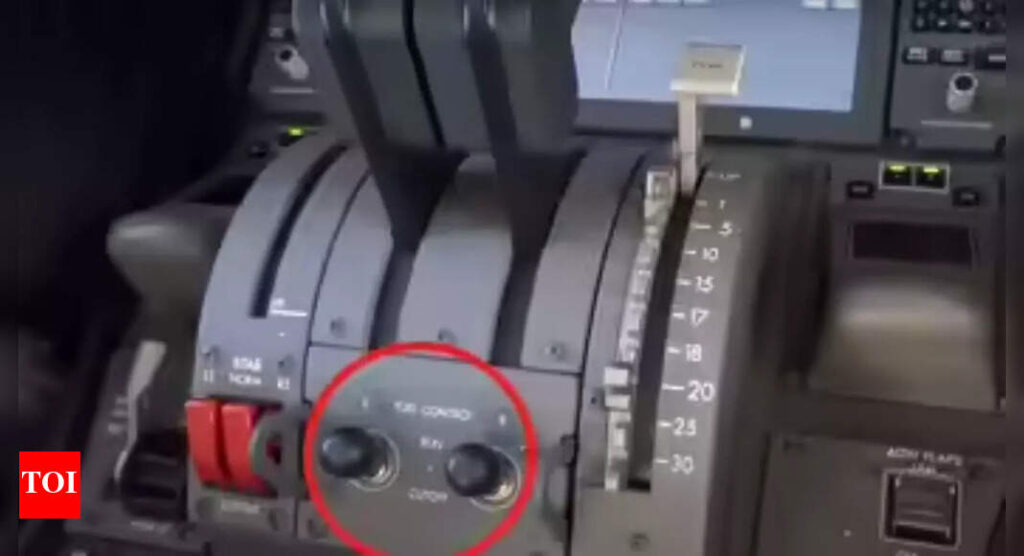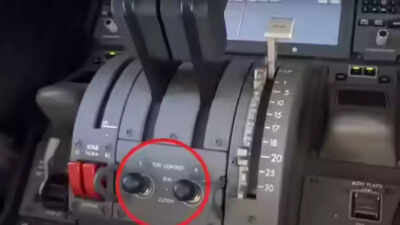
NEW DELHI: The US Federal Aviation Administration (FAA) and Boeing have privately issued a notification that the fuel switch locks on Boeing aircraft are safe, according to a Reuters report citing sources. The clarification follows India’s Aircraft Accident Investigation Bureau (AAIB) preliminary report on the June 12, Air India Flight 171 crash.According to the Reuters report, the FAA issued a Continued Airworthiness Notification on July 11 after preliminary findings from AAIB referenced to a 2018 FAA advisory about the engine fuel cutoff switches in the Air India Boeing 787-8 crash that killed 260 people last month.The AAIB report questioned whether the fuel switches might have been accidentally activated shortly after takeoff, leading to the engine failure.The FAA’s notification to Civil Aviation Authorities, said that, “although the fuel control switch design, including the locking feature, is similar on various Boeing airplane models, the FAA does not consider this issue to be an unsafe condition that would warrant an Airworthiness Directive on any Boeing airplane models, including the Model 787.”Boeing also cited the FAA’s position in a Multi-Operator Message recently circulated to airlines. Two sources told Reuters that the US plane maker has not recommended any additional action in response to the incident.The preliminary report of the Aircraft Accident Investigation Bureau (AAIB) report mentioned that the fuel switches of engine one and two of the Boeing 787-8 Dreamliner aircraft were cut off within a gap of one second and later turned on before the crash.The preliminary investigation report into the crash by India’s Aircraft Accident Investigation Bureau (AAIB) had pointed to a 2018 FAA Safety Alert for Operators (SAFO), which recommended, but did not mandate, carriers operating Boeing models, including the 787, to inspect the fuel switch locking mechanisms to prevent inadvertent movement.The said fuel control switch design, including the locking feature, is similar on various Boeing airplane models, including the B787, the aircraft that crashed.However, the AAIB report also pointed out that Air India had not conducted the inspections recommended in the FAA’s 2018 advisory, as the directive was not mandatory.It added that maintenance logs showed the aircraft’s throttle control module, which houses the fuel switches, had been replaced twice, in 2019 and again in 2023.The report further noted that “all applicable airworthiness directives and alert service bulletins were compiled on the aircraft as well as engines.”The FAA recommended: “Inspect the locking feature of the fuel control switch to ensure its engagement. While the airplane is on the ground, check whether the fuel control switch can be moved between the two positions without lifting up the switch. If the switch can be moved without lifting it up, the locking feature has been disengaged and the switch should be replaced at the earliest opportunity.”The AAIB report said: “The airworthiness concern was not considered an unsafe condition that would warrant an airworthiness directive (AD) by FAA. As per information from Air India, the suggested inspections were not carried out as the SAIB was advisory and not mandatory.”
What are fuel control switches linked to Air India flight AI171 crash?
Fuel control switches manage the fuel supply to an aircraft’s engines and are crucial during engine start-up and shutdown, both on the ground and in flight. In case of engine failure, pilots can use them to manually shut down or restart the engines. On a Boeing 787-8 Dreamliner, like the one used for Air India Flight AI171, the two fuel switches are located just below the thrust levers.Experts say these switches are designed to prevent accidental activation. However, if moved, the impact is immediate, cutting off engine power.
Indian pilots association calls for ‘fair inquiry’
ALPA India, which represents Indian pilots at the International Federation of Air Line Pilots’ Associations (IFALPA), has called for a “fair, fact-based inquiry” into the crash of Air India Flight AI171. The pilots’ association rejected any early presumption of pilot error and urged authorities to include them in the probe as observers.In a statement posted on X, ALPA India pointed to the preliminary investigation report which referenced a 2018 FAA advisory “concerning the fuel control switch gates, which indicates a potential equipment malfunction.”Capt Sam Thomas, president of the Airline Pilots’ Association of India had earlier said: “The AAIB report refers to a serviceability bulletin concerning the fuel control switch gates, which indicates a potential equipment malfunction. The tone and direction of the investigation suggest a bias toward pilot error. ALPA categorically rejects this presumption and insists on a fair, fact-based inquiry.”“The pilots body must now be made part of the probe, at least as observers,” ALPA India President Sam Thomas told Reuters.
What did the preliminary data reveal?
Flight data revealed that just seconds after reaching its maximum speed of 180 knots during takeoff, both engine fuel switches moved from ‘RUN’ to ‘CUTOFF’ within one second of each other, cutting off thrust to the engines.“The aircraft achieved a maximum recorded airspeed of 180 knots… and immediately thereafter, the engine 1 and engine 2 fuel cutoff switches transitioned from RUN to CUTOFF position one after another with a time gap of one second,” the report added.A cockpit voice recording captured one pilot asking the other, “Why did you shut off the fuel?” to which “the other pilot responded that he did not do so,” the report said.The fuel switches were flipped back to ‘RUN’ after 14 seconds, triggering the aircraft’s auto relight sequence. However, by then, both engines had already lost critical power. The aircraft entered a steep descent and crashed into a nearby building just 32 seconds after takeoff, despite the crew’s “MAYDAY” distress call.The report also noted deployment of the Ram Air Turbine (RAT), a backup power source that activates when both engines fail. CCTV footage from the airport confirmed RAT deployment, and investigators found no evidence of bird activity around the aircraft.The report does not explain how or why the fuel switches were moved during the flight.








